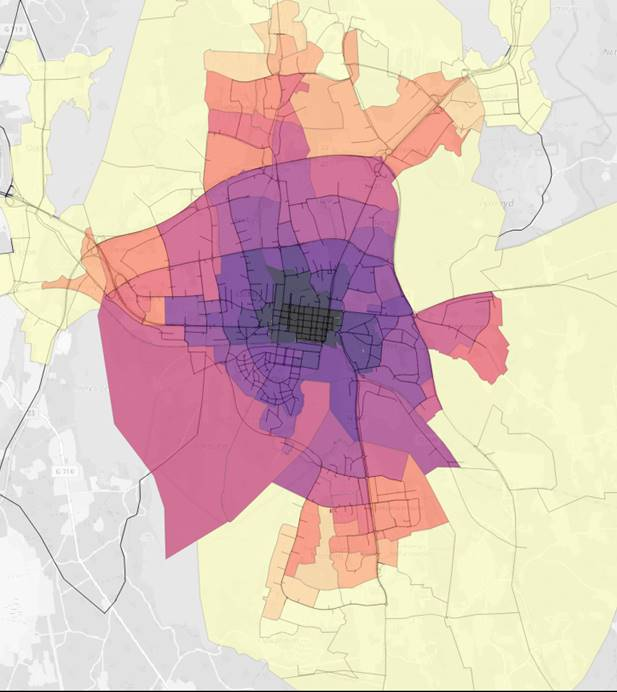As a part of the SUMBA project, Växjö municipality will be updating and developing its transport forecasting model, an important tool that will help city and transport planners update the municipality’s transport plan.
The four-stage model is built in VISUM and consulting firm Ramboll is making the updates and additions to the model which includes car, bicycle traffic and city bus lines within Växjö city. The work also includes a new separate cycling module that will help planners to develop and improve the city’s cycling network. The cycling module models and forecasts bicycle mode choice and routes through the network by taking into account network attributes including safety/comfort, elevation change and travel accessibility by bike.
The four-stage model is calibrated using results from a travel habit study from 2012 and updated with current housing and traffic data. A forecast model will then be generated for traffic in 2030 based on the city’s master plan and will contribute to identifying measures in the municipality’s commuter master plan. Individual analyses can then be used to test different investment alternatives to the municipality’s traffic system including changes to posted speed limits, updates to the bicycle highway network and safety considerations in high density areas. The model is planned to be completed by February 2020.


